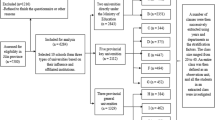Abstract
The purpose of the work was to study the role of melatonin in the development of age-related pathology and morbidity in male rats under model conditions of accelerated aging caused by impaired photoperiodism. Circadian-rhythm disruption upon exposure to light at night initiates the development of age-related changes in the body and contributes to the formation of age-associated diseases. The article presents the results of an experimental study showing that the use of melatonin in laboratory animals in various light regimes (standard lighting, natural lighting in northwest Russia, and constant lighting) significantly reduces the number of cases of intravital morbidity (rhinitis, conjunctivitis, pneumonia, otitis media, etc.) and postmortem-detected, age-related pathology (tumors, chronic diseases of the respiratory and cardiovascular systems, etc.). Apparently, the immunomodulatory and antioxidant properties of melatonin and its participation in the maintenance of energy homeostasis of the body allows this hormone to perform a universal protective mission in the body—to interfere with pathological processes of any origin.

Similar content being viewed by others
REFERENCES
Anisimov, V.N., Molekulyarnye i fiziologicheskie mekhanizmy stareniya (Molecular and Physiological Mechanisms of Aging), St. Petersburg: Nauka, 2008, vol. 1.
Anisimov, V.N., Light desynchronosis and health, Svetotekhnika, 2019, no. 1, pp. 30–38.
Anisimov, V.N., Accelerated aging syndrome under the influence of carcinogenic environmental factors, Ross. Fiziol. Zh. im. I.M. Sechenova, 2010, vol. 96, no. 8, pp. 817–833.
Arushanyan, E.B. and Ovanesov, K.B., The role of melatonin in the physiology and pathology of the eye, Med. Vestn. Sev. Kavk., 2016, vol. 11, no. 1, pp. 126–133.
Bukalev, A.V., Vinogradova, I.A., Zabezhinskii, M.A., et al., Light pollution increases in the morbidity and mortality rates from different causes in male rats, Adv. Gerontol., 2012, vol. 2, no. 4, pp. 312–318.
Gerontologiya in Silico: stanovlenie distsipliny. Matematicheskie modeli, analiz dannykh i vychislitel’nye eksperimenty (Gerontology in Silico: Development of New Discipline. Mathematical Models, Data analysis, and Computational Experiments), Marchuk, G.I. et al., Eds., Moscow: BINOM, Laboratoriya Znanii, 2007.
Melatonin: teoriya i praktika (Melatonin: Theory and Practice), Rapoport, S.I., et al., Eds., Moscow: Medpraktika-M, 2009.
Semiglazova, T.Yu., Osipov, M.A., Novik, A.V., et al., Prospective use of melatonin in clinical oncology, Zlokach. Opukholi, 2016, no. 4, pp. 21–29.
Khizhkin, E.A., Ilyukha, V.A., and Vinogradova, I.A., Changes in the digestive function of rats caused by prolonged constant light, Ross. Fiziol. Zh. im. I.M. Sechenova, 2019, vol. 105, no. 2, pp. 238–247.
Amaral, F.G. and Cipolla-Neto, J., A brief review about melatonin, a pineal hormone, Arch. Endocrinol. Metab., 2018, vol. 62, no. 4, pp. 472–479.
Anisimov, V.N., Popovich, I.G., Zabezhinski, M.A., et al., Melatonin as antioxidant, geroprotector and anticarcinogen, Biochim. Biophys. Acta, Bioenerg., 2006, vol. 1757, pp. 573–589.
Habtemariam, S., Daglia, M., Sureda, A., et al., Melatonin and respiratory diseases: a review, Curr. Topic Med. Chem., 2017, vol. 17, no. 4, pp. 467–488.
Hardeland, R., Aging, melatonin and the pro- and anti-inflammatory networks, Int. J. Mol. Sci., 2019, vol. 20, no. 5, pp. 1223–1238.
Khizhkin, E.A., Ilukha, V.A., Vinogradova, I.A., et al., Physiological and biochemical mechanisms of lifespan regulation in rats kept under various light conditions, Curr. Aging Sci., 2017, vol. 10, no. 1, pp. 49–55.
Matveeva, Yu.P., Zhukova, O.V., Lotosh, T.A., et al., The role of constant light exposure in various periods of postnatal ontogenesis in the development of pathology and mortality in male rats, Adv. Gerontol., 2019, vol. 9, no. 2, pp. 141–146.
Nduhirabandi, F. and Maarman, G.J., Melatonin in heart failure: a promising therapeutic strategy?, Molecules, 2018, vol. 23, no. 7, pp. 1819–1822.
Obukhova, E.S., Zhukova, O.V., Khizhkin, E.A., et al., The effect of light deprivation and luzindole on the ovulatory function in rats, Adv. Gerontol., 2018, vol. 8, no. 1, pp. 22–25.
Percy, D.H. and Barthold, S.W., Pathology of Laboratory Rodents and Rabbits, Ames, IW: Blackwell, 2007, 3rd ed.
Reiter, R.J., Tan, D.X., Rosales-Corral, S., et al., Mitochondria: central organelles for melatonins antioxidant and anti-Aging actions, Molecules, 2018, vol. 23, no. 2, pp. 509–513.
Pathology of Tumors in Laboratory Animals, Vol. 2: Tumors of the Mouse, IARC Sci. Publ. no. 111, Turusov, V.S. and Mohr, U., Eds., Lyon: Int. Agency Res. Cancer, 1994, 2nd ed.
ACKNOWLEDGMENTS
The authors express their deep gratitude to M.A. Zabezhinsky, Doctor of Medical Sciences, for scientific advice and discussions.
Author information
Authors and Affiliations
Corresponding author
Ethics declarations
Conflict of interests. The authors declare that they have no conflict of interest.
Statement on animal welfare. The keeping of animals corresponded to the rules of laboratory practice as regulated by the Order of the Ministry of Health of the Russian Federation of April 1, 2016, no. 199n, “On the Approval of the Rules of Good Laboratory Practice.” In the experiments, measures were taken to avoid unnecessary physical suffering or injury to the animals. The work was carried out in compliance with the principles of the on the humane treatment of animals and the principles of humanity as set forth in the Directive of the European Parliament and of the Council of the European Union (2010/63/EU), and GLP regulations (GOST (State Standard ) 33044-2014).
Additional information
Translated by G. Levit
Rights and permissions
About this article
Cite this article
Vinogradova, I.A., Matveeva, Y.P., Zhukova, O.V. et al. Melatonin Prevents the Development of Age-Related Pathology in Male Rats during Accelerated Aging Caused by Impaired Photoperiodism. Adv Gerontol 11, 77–82 (2021). https://doi.org/10.1134/S2079057021010483
Received:
Revised:
Accepted:
Published:
Issue Date:
DOI: https://doi.org/10.1134/S2079057021010483




